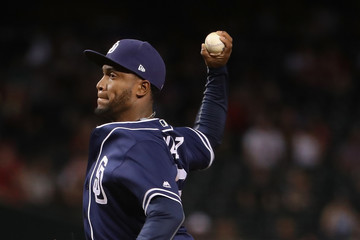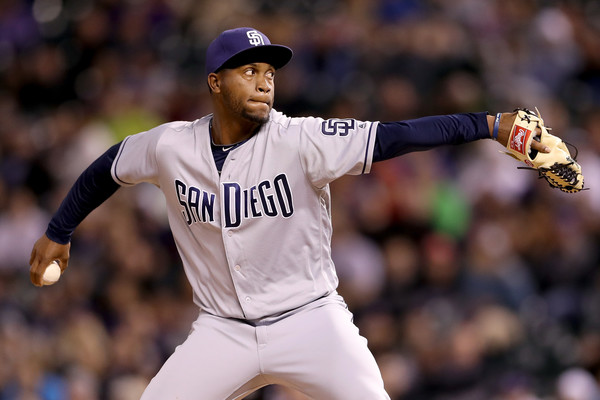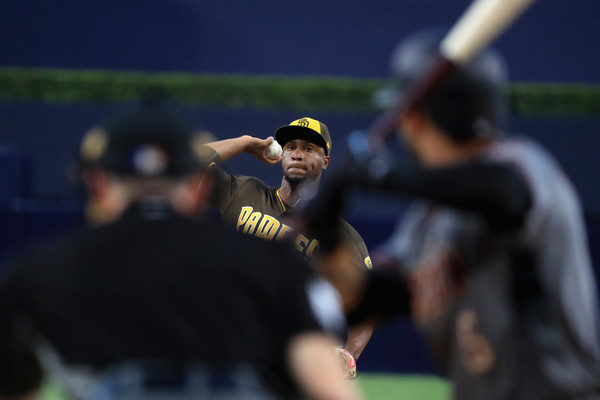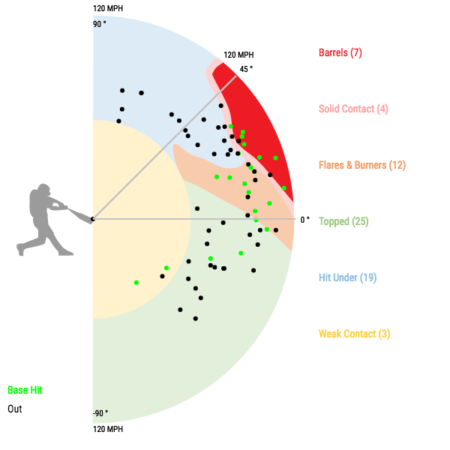Miguel Diaz is Worth Keeping Around


Although the Padres are just two months into what is going to be another lost season as part of the rebuilding effort, the team has made some history in 2017.
After selecting/acquiring four players in the Rule 5 Draft in 2015, among which two ended up staying with the team, the Padres went ahead and selected another three players in the Rule 5 Draft in 2016.
In 2016, Luis Perdomo was the only one who made it through the entire season on the Padres 25-man roster, as both Blake Smith and Josh Martin were acquired by the Padres and sent back to their respective teams before the season began. Jabari Blash, on the other hand, was sent back to the Mariners before being re-acquired by the Padres, and he currently plays in Triple-A.
This season, the Padres started the season off with three Rule 5 draftees on their 25-man roster- Allen Córdoba, Luis Torrens, and Miguel Diaz. To this point, Cordoba has exceeded all expectations, Torrens has been largely absent, and Diaz has been unspectacular, if not full of tantalizing potential. Enough has been said about Córdoba, and Torrens hasn’t really done enough to draw notice, so the focus here will be on Diaz and his long term prospects as a San Diego Padre.
Right off the bat, it is fairly easy to compare Diaz to a younger Perdomo, as both players were selected in the Rule 5 Draft, both players did not play above A-ball before being selected in the draft, and both players have somewhat similar profiles as hard throwers with solid potential off-speed offerings.
So far, Diaz has thrown 374 pitches on the season, 60.8 percent of which have been straight fastballs, 19.2 percent of which have been sliders, with just over one percent curveballs, and 18.9 percent changeups. At this point, this is a very similar profile to what Perdomo has shown so far this season: 59.5 percent fastballs, 35.7 percent sliders, and 4.9 percent changeups. Perdomo has shown more effectiveness with his slider so he has used that pitch more frequently this season while mixing up speed and movement with his fastball. Diaz, on the other hand, uses his changeup more frequently because his slider is not quite as effective as Perdomo’s currently is.

Diaz averages 95 mph with his fastball, 81 with his slider, 81 with his curveball, and a hard 88 with his changeup. Through two months of the season, Diaz’ numbers really don’t stand out, as the right-hander has sported only a 16 percent K-rate to go with an elevated 12 percent walk rate. Add those to his 7.15 ERA and 6.35 FIP, and it is clear to see that Diaz has not had much success in the early season. But there needs to be a huge caveat there: this guy is 22 years old playing in the major leagues after never pitching higher than A-ball. That’s impressive, and it’s the same story we saw last year with Perdomo. I hate to keep bringing up that comparison, but Perdomo was similarly terrible in the first few months of last season before improving, as evidenced by his ERA progression throughout the season: 10.97, 9.39, 7.00, 3.99, 3.24, 5.23. Obviously things tailed off a bit there at the end, but Perdomo still showed pretty significant development as the year wore on.
Diaz has actually gone the other way so far. After giving up seven earned runs in 11 and two-thirds innings in April, Diaz gave up 11 earned runs in 11 innings pitched in May. Diaz struck out more batters in May than in April, but he also walked more batters, leading to more struggles for the youngster. In terms of basic numbers, Diaz has been uninspiring, if not altogether lackluster. But that is to be expected for a player his age with such a lack of professional experience in the upper levels of the minors. However, the quality of contact Diaz has been giving up shows a more impressive story.
So far, Diaz has been really good at getting right-handed batters out, and especially good at inducing both weak pop-ups and weak contact in more general terms. However, Diaz has had a pretty substantial problem with left-handed batters, as shown by his splits, .180/.281/.367 slash line against righties vs. a .333/.442/.657 slash line against lefties. There is obviously a lot of noise there, so let’s look at a radial chart of all the batted ball events for Diaz in 2017.

This chart gives a much better impression of what kind of pitcher Diaz has been to this point. Sure, Diaz has given up seven barrels and four solidly contacted balls out of his 70 total batted ball events, but more often than not Diaz is getting good results on batted balls. Among those seven barrels, six fell for hits, including home runs given up to Giancarlo Stanton, Cody Bellinger, Ender Inciarte, and Nolan Arenado, which is a pretty solid crop of hitters. Among the solid contact, there is another Cody Bellinger home run, this one of the grand slam variety.
In the next batted ball category are flares and burners, which are balls that are hit harder than 60 mph but lack much elevation. In this category, Diaz has 12 outcomes, of which seven fell for hits, including this one to David Peralta of the Arizona Diamondbacks.
Next up are topped balls, which are balls hit over 60 mph with a negative launch angle, so basically most balls hit on the ground. This is one category where Diaz has really excelled, as he has gotten 25 topped balls, which represents over a third of all his batted balls, with only four of those falling in for hits.
Second to last on the list of batted ball events are balls that are hit under, which are hit higher than 60 mph but are hit at too high of a launch angle at too low a speed to be productive batted balls. In this category, Diaz has 19 batted ball events, of which none fell for hits.
Finally, the most important batted ball category for a pitcher is weak contact. Diaz only had three batted balls fall into this category, which are any balls hit at or less than 60 mph with any launch angle. Diaz had three balls in this category, of which two actually ended up being hits. These are obviously fluky results, because this is just the type of contact a pitcher wants to induce.
So all-in-all, Diaz has been having some success with certain batted ball types, mainly topped balls and pop-ups. If Diaz can further limit hard contact in the barrel/solid contact region, and induce more weak contact both on the ground and in the air, he can have some success in the Padres’ bullpen in 2017. Long term, this is still a potential starter profile, albeit one who will probably need further minor league seasoning before that potential can be reached. In this way, Diaz may be unlike Luis Perdomo, but that is just fine. He is his own player, and he is worth keeping around, no matter how bad the downs are this season.
Editorial and Prospect Writer for East Village Times. Twenty-five years young, Patrick has lived in San Diego for his entire life and has been a Padres fan nearly as long. Patrick lives for baseball and is always looking to learn new things about the game he loves through advanced stats.
Gotta be better than Jered Weaver, right?
Whenever I see or hear Diaz’ name, all I can think about is that nasty pitch in the opener series of the year against Pederson and the Dodgers. That ball just dove back across the inside corner. The Padres have nothing to lose in keeping Diaz and everything to gain. Even if he becomes a high leverage reliever, this rule 5 pick will/would be a success. If Cordoba continues his success and Diaz finds more later in the season as Perdomo did last year, Preller and Co. will have done an outstanding job in finding 3 players to help the team not only through the rebuild, but also when the team starts to contend in a couple of years. Great job Padres front office!
Couldn’t agree more Dustin. He’s got a lot of potential and could be a really useful part of the Padres’ future